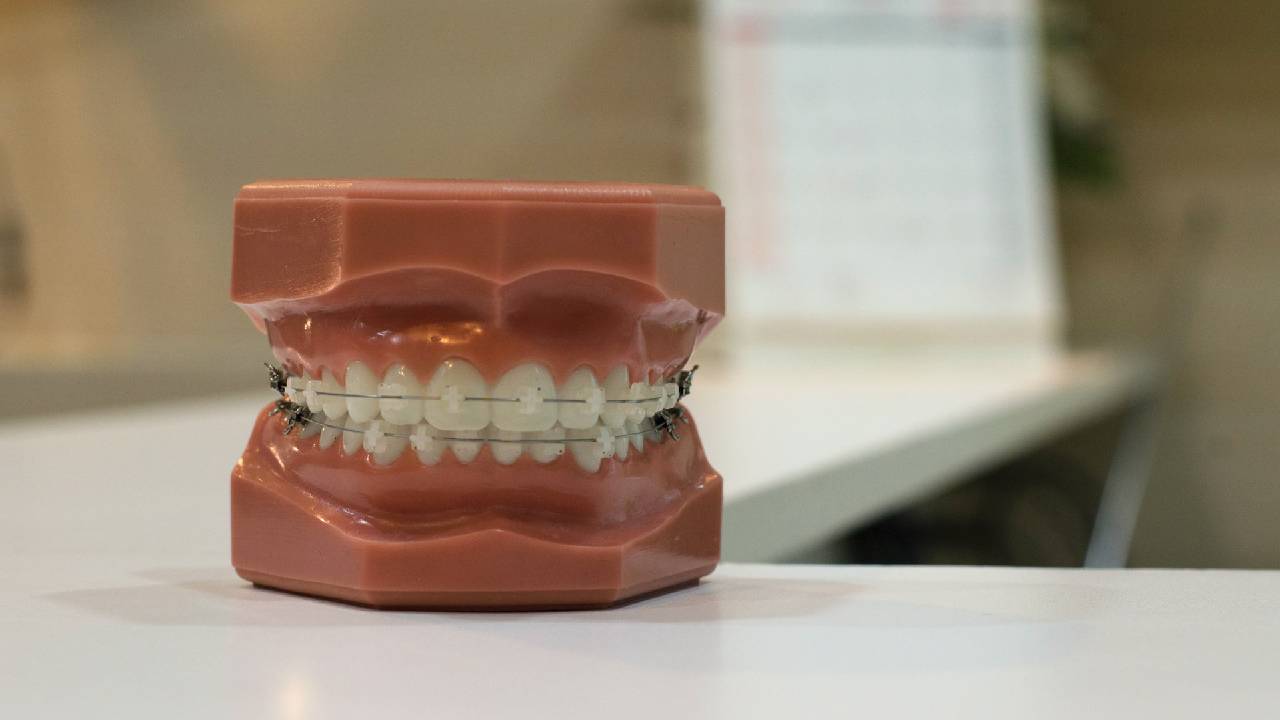If you’re considering taking care of your teeth to achieve the perfect smile, one of your main questions will surely be about which type of treatment you should get – traditional braces or the innovative clear aligners? While the traditional metal or ceramic braces certainly have their pros, they can also be unsightly; on the other hand, clear aligners are nearly invisible, but they do cost more on average, and some insurance programs don’t cover it as they’re considered cosmetic items. In the end, it all comes down to personal preference and needs, but to make an informed decision, you need to know the main pros and cons of each choice – so without further ado, let’s take a look at the top differences between regular braces and clear aligners.

Table of Contents
Clear Aligners (Invisalign)
Clearly, when comparing braces vs. clear aligners, it’s a close race. If you’re more self-conscious and want a discreet but effective solution, or if you suffer from oral discomfort, Invisalign (the most popular band of clear braces) may be the perfect choice for you. Not only is it virtually invisible, but it’s also removable so you can eat, brush and floss more naturally, which ensures you have a more relaxed and comfortable experience.
While metal braces stand out, Invisalign, on the other hand, is designed to be nearly impossible to detect. These clear aligners are made of discreet, comfortable, BPA-free clear plastic and are worn over your teeth to delicately and gently move your teeth to the right position, step by step. Your dentist will take an X-ray of your teeth, create an exact 3D model of them and then create a step by step mold until you reach the perfect alignment. This means that every few weeks, you simply stop using the old mold and switch to a newer one with a slightly different configuration (the number of different molds you must use varies depending on your unique situation and objective).
The whole treatment is, on average, more expensive than regular braces, and some insurance programs do not cover it, as mentioned previously. So always be sure to check these factors before making a decision.
Traditional Braces
Timeless, affordable, and effective, traditional braces continue to be the most widely used solution. Even though clear aligners have their advantages. If their more expensive price tag or the idea of having to remove your aligners for meals or to consume pretty much anything but water seems inconvenient. Then regular braces might just be the right choice for you. As you likely know by now, the whole process is simple – you make an appointment. You draft a solution, you apply the braces with an adhesive and then simply change the ligatures every few weeks to, little by little, achieve the perfect alignment.
Another great advantage is that with regular braces, you can just “set and forget” them. On the other hand, with Invisalign, you have to remember to use them at all times in order for them to be effective. This can be hard, especially for some kids, due to how often they simply forget. Plus, since regular braces do not cover the teeth as a whole, it’s easier to prevent stains, cavities, and other bacteria from forming in your mouth. If their visual mark on your teeth doesn’t really bother you. They’re a great way to get a fantastic smile without breaking the bank.
Main Differences
In the battle of braces vs Invisalign, these are the main points of difference:
Visual Impact – Clear aligners are nearly invisible, while traditional braces are easily recognizable.
Speed of Treatment – Even though it varies heavily from person to person, traditional braces are, on average, a faster treatment than clear braces.
Comfort – In this aspect, clear aligners are, by far, the more comfortable solution. They do not scrape the cheeks, they don’t cause any noticeable discomfort on the gums, and there is next to no pain associated with adjustments. Even then, there are still ways to make regular braces more comfortable.
Price – Even though the cost of both varies from case to case, clear braces are, on average, more expensive than regular braces by a fair margin.
Insurance – Nearly all appropriate insurance programs cover treatment with regular braces. On the other hand, Invisalign or other forms of clear braces are not covered as widely since they’re sometimes considered “cosmetic” treatments.
Conclusion
As we hope this handy guide has been able to show, both regular braces and clear aligners are excellent solutions to achieve a perfect smile. Each with their own unique advantages and disadvantages, with the final decision being up to each unique individual. Always be sure to check with your insurer to see which treatment they cover and always talk to your orthodontist to get a professional recommendation on which option is the best for you. Having that said, we hope you’ve enjoyed reading, and as always, have a great day!

